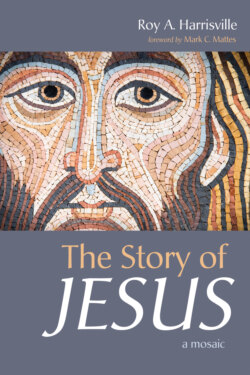Читать книгу The Story of Jesus - Roy A. Harrisville - Страница 11
На сайте Литреса книга снята с продажи.
The Boyhood of Jesus
ОглавлениеWith the exception of Luke, the canonical Gospels Matthew, Mark, and John record nothing of Jesus’ boyhood or growing up years. There are, however, narratives concerning Jesus’ childhood which did not find their way into the canonical texts, but in one way or another answered to the Church’s appetite for stories of his early life. In The Infancy Gospel of Thomas, for example, the boy Jesus is described as modeling sparrows from clay and summoning them to take flight, or is told of raising from the dead a child who had fallen from a second-story roof. One of these so-called “apocryphal” Gospels furnished the Russian composer Peter Ilyich Tchaikovsky with lyrics that describe Jesus’ treatment at the hands of tormentors who saw him weaving garlands of roses:
Do you bind roses in your hair?” They cried, in scorn, to Jesus there. The Boy said humbly: “Take, I pray, All but the naked thorns away.” Then of the thorns they made a crown, And with rough fingers press’d it down, Till on his forehead fair and young, Red drops of blood, like roses sprung.5
The evangelist Luke furnishes the exception. In the same chapter in which he records the birth and naming of Jesus, he tells of his traveling to Jerusalem with his parents for the festival of Passover, of their concern at his disappearance, he all the while remaining behind in the temple, sitting among its teachers, listening and asking questions Virtually the same narrative appears in the apocryphal Gospel cited above. The narrative continues with the teachers’ amazement at the young boy’s wisdom, and with his response to his mother’s irritation at his three-day absence: “Did you not know that I must be in my Father’s house?” What it was about which Jesus was listening and asking questions, thus produced the teachers’ amazement at his wisdom, Luke gives no clue. At the same time, his reference to the amazement of the shepherds’ audience at their story of the angelic host heralding Messiah’s arrival, the amazement of the child’s parents at what the ancients, Simeon and Anna, had to say of the child at his presentation in the temple, the amazement of the temple academics at his wisdom, and that of his parents at finding him in the sanctuary, suggest a context calculated to accent the event of this child as removed from the ordinary and natural. Luke, concerned with setting his Jesus-story within a world-wide setting, as signaled, for example, in the reference to a decree having gone out “from Emperor Augustus that all the world should be registered,” as well as in the subsequent tracing of Jesus’ genealogy to Adam, may have structured his narrative in a form analogous to the ancient hierophanies and legends of Greece and Rome. I do not take this feature as pleading for dependence, since, as the French have it, “similarity does not spell identity.” Further, this will be the one and only instance in which those attached to the temple will treat Jesus with deference, thus for some interpreters belonging to a “Galilean spring” supposedly marking the first portion of the third Gospel, and in stark contrast to Matthew’s opening his narrative with the threat of violence against the “King of the Jews.”
